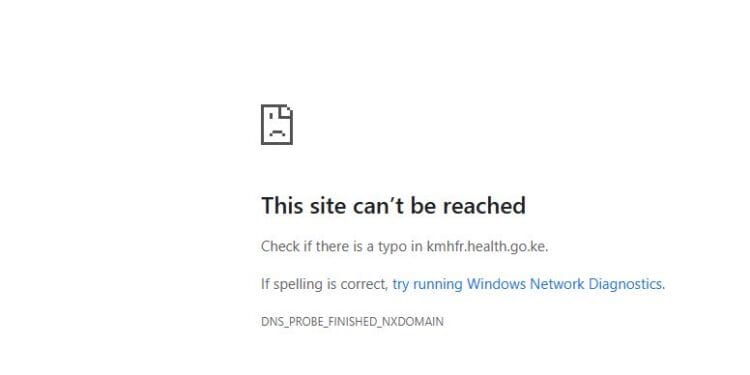
Kenya, Aug. 25 -- In a major blow to transparency, the Ministry of Health has disabled the Kenya Master Health Facility Registry (KMHFR) website and database following revelations of ghost hospitals siphoning millions from the Social Health Authority (SHA) in Kenya.
This move comes after Kenyans spent the past week unmasking fake facilities on the SHA list, exposing how nonexistent entities were paid vast sums from public funds.
The KMHFR disabled action has sparked widespread outrage, as it now prevents ordinary citizens from verifying hospital details or continuing to expose fake hospitals, raising concerns about accountability in the healthcare sector.
The scandal erupted when vigilant Kenyans began scrutinising the SHA payout lists, identifying numerous ghost hospitals that appeared legitimate on paper but had no physical presence or operational history.
These fake entities, often registered with fabricated addresses, were allegedly raking in millions meant for genuine medical services, draining resources from taxpayers.
Social media platforms buzzed with user-led investigations, where people cross-referenced KMHFR data to highlight discrepancies, such as hospitals listed in remote areas that locals confirmed never existed.
This grassroots effort shows the power of public oversight in combating corruption within Kenya's health system. The Ministry's decision to shut down the KMHFR website has been criticised as a knee-jerk reaction to hide further embarrassments rather than address the root issues.
Previously, the registry served as a vital tool for patients seeking reliable healthcare providers, offering details on facility locations, services, and accreditation.
Without it, accessing accurate information becomes challenging, potentially endangering lives by directing people to unverified or substandard clinics.
Experts argue that instead of disabling the platform, authorities should have enhanced its security and accuracy to prevent future ghost hospitals and SHA scandals.
The expose has also highlighted systemic flaws in the SHA framework, where lax verification processes allowed ghost facilities to infiltrate the reimbursement system.
Reports indicate that some of these fake hospitals were linked to influential figures, fueling suspicions of insider involvement. Kenyans have called for independent audits and the reinstatement of the KMHFR database with improved features, like real-time reporting mechanisms for suspicious entries.
This incident echoes past controversies in public fund mismanagement, prompting demands for reforms to safeguard health allocations. As the dust settles, the KMHFR's disabled status leaves a void in public health transparency, making it harder to expose fake hospitals and hold officials accountable. Restoring access could rebuild trust and empower citizens in monitoring SHA expenditures.
The ghost hospitals scandal in Kenya serves as a wake-up call for better governance, with the SHA urged to implement stringent checks to prevent such fraud moving forward.
Without the KMHFR website, Kenyans face barriers in verifying healthcare providers, amplifying fears that more ghost hospitals could go undetected in the SHA system.
Ultimately, the decision to keep KMHFR disabled amid the ghost hospitals expose undermines efforts to combat corruption, calling for swift action to reinstate and fortify the registry for the benefit of all Kenyans.
Published by HT Digital Content Services with permission from Bana Kenya.
